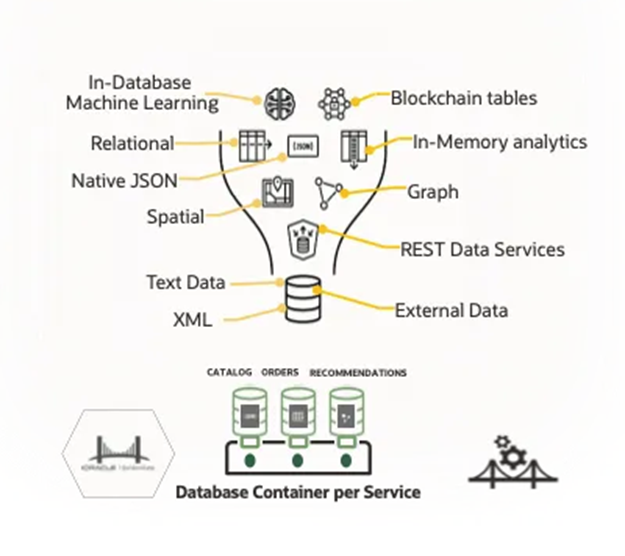Today modern application uses lot of different
types of data, structured, unstructured, geospatial data, or different representation
(like graphs) to speed up analytical queries, they use sometimes either use relational
or schemeless approach and so on.
Very often we have to choose between different
products to reach what we really want to get with our applications and fit
business needs. Use different vendor product means a bit more effort to full
the gaps of all different technologies and the biggest problem arrives when we need
to Join the data that are distributed on heterogeneous products and engine, because
it is not possible to transform different models of data into a specific model
while the application is up and running, or we don’t want to duplicate or move
the data.
To address these requirements, we need a
data platform that can manage all types of data in the same engine, and bring
out the value of data when needed, and able to support new types of data when
application/business evolves, so to use the same engine which can handle all types
of data it is possible with Oracle database today. The Oracle database is an
example of a database can manage all types of data with the same engine, and so
it makes easier to bring out the value of your data when you need.
We can use for Instance Oracle database
for spatial or graph database, or have another Oracle database for NoSQL based
approach with collections and JSON documents, or another database for relational
data and exploit it for analytics columnar queries at the same time performs
well for transactional system, have an Oracle database on-premise, cloud@customer, on Oracle cloud Infrastructure
(OCI) and have the best PaaS service(Autonomous database) or in a generic
hyperscale (like AWS, Azure), with Oracle database you can also have the data where they reside, for example you
can map data (as Avro, ORC, Parquet, Json,
Excel, CSV or any delimited files ) that are on file system or on different
Object storage buckets by External tables and realize a modern LakeHouse or a
Datamesh solution.
To achieve all these we can use one
Oracle database for each type of semantics or use different Oracle database for
each of them, the decision is upto the Implementation team, because it is not
necessary to activate any parameters or licenses, the Oracle database is already
ready to manage all this type of data. And if we decide to use Oracle database
for each model of data, Oracle implemented a multi-Tenant architecture to facilitate
the operations, allowing you to manage many Oracle database like One database
(extremely useful when using on-prem or not In PassS model). Also Oracle supports
vertical and horizontal scaling and not only using RAC but also using Sharding
configuration, and you can also decide to deploy Oracle database on Kubernetes using
Oracle operator.
In conclusion, with Oracle it is extremely
simple to obtain a complete DATA platform for any Type(s) of data.
But if you have already developed many applications
on other competitor products, such as MongoDB – because at first time, my
application only needed to store JSON documents, but now if you need to use ML algorithms
on the same data to predict my customers behaviours, (or) I need to speed up
the performance for analytics reports and dashboard using a columnar format
over JSON keys, (or) if the application need to use JSON, spatial and relational
data all together, then how can I solve this ? do we need to rewrite all the
application code and re-test it ?
Not at all, there is a simpler solution,
Oracle rolled out Oracle database API for MongoDB (using Oracle database and
ORDS ) that let you run your
applications built with MongoDB API on Oracle database and after that, you will
be free to use all the potential capabilities that Oracle database can offer about managing all
kind of semantics, performance, availability, scaling and security.
Oracle offers these features not only on
Oracle Cloud, but wherever you want and talking about no lock-in products,
Oracle also has a great tool called Oracle Golden Gate to feed or synchronize
data between different Oracle databases or to other competitors products.
In the next blogpost, I’ll show you how
to configure and use Oracle Database API for MongoDB.


No comments:
Post a Comment